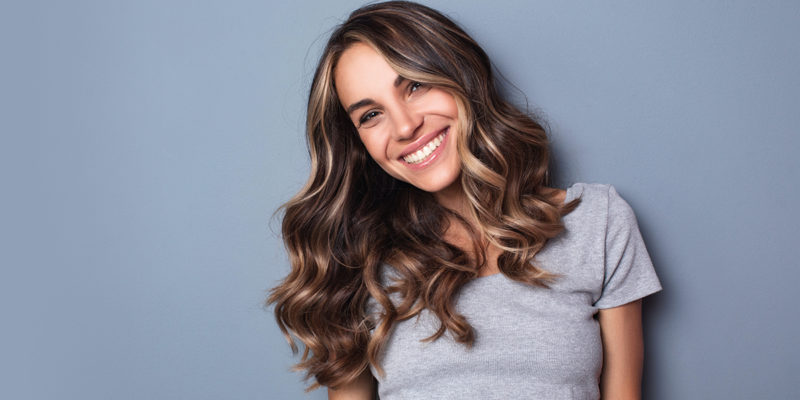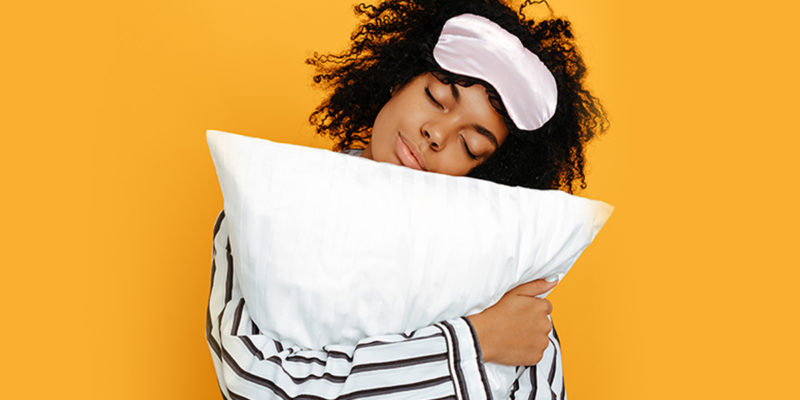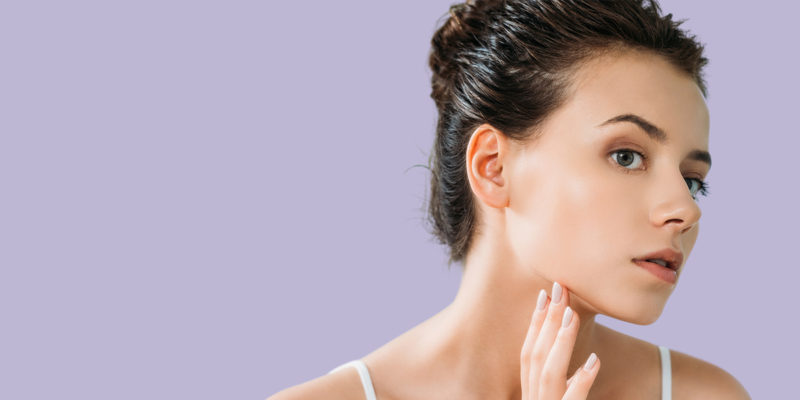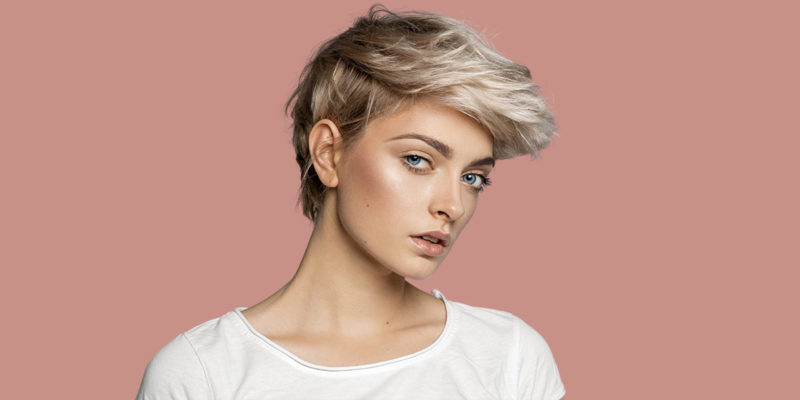How to Not Damage Your Hair

If you are trying to grow your hair to make it longer or fuller, one of the worst things you can do is let it get damaged.
The more damaged your hair is, the more breakage you will suffer.
This can reduce your terminal length.
That means that even if you are doing everything else right to grow your hair quickly at the root, it still might have a hard time reaching the length you are trying to achieve.
Moreover, hair which is damaged may also appear less full and voluminous.
How Do You Know If Your Hair Is Healthy? Take The Hair Quiz and Find Out Now!
It may also appear dull, and easily form tangles and frizz.
How to Prevent Damage to Your Hair
The first thing to understand is that hair is subjected to a surprising amount of wear and tear every day.

Chances are good that your hair care habits could be a factor in your split ends and the other damage you see in your locks.
Common ways we damage our hair every day include:
- Using harsh shampoos and other hair care products
- Washing hair too frequently or not frequently enough
- Misuse of flat irons and other heat-based styling products
- Combing hair incorrectly
- Sleeping on hair
- Leaving bleach in for too long
- … and more
To help you put an end to these bad habits and form new ones which support the health of your hair, I'm going to give you tips and recommendations for how not to damage your hair when doing a variety of everyday activities.
Preventing Hair Damage When Using Heat (Curling or Straightening)

One of the easiest and fastest ways to style your hair is by using a flat iron or curling iron.
Flat irons, in particular, can be used to create a dazzling array of styles in minutes.
But the extreme heat that they subject your hair to can fry your tresses.
Repeated exposure without taking the right steps can cause damage over time.
Here are some tips to apply heat directly to your hair with these appliances without causing damage:
Bonus: Download these 10 Aloe Vera Hair Gel Recipes for longer, stronger and healthier hair you'll fall in love with.
- Start by spraying your hair with thermal protectant. This should help to reduce the damage during the heat application.
- When in doubt, use the lowest heat setting on a new iron before testing out the higher settings.
- When you use an iron on your hair, make sure it is not wet. Damp is fine and dry is fine, but wet hair will positively sizzle.
- Become an expert with timing your strokes so that your hair is not exposed too long to the heat, but you still get the effect you are after the first time through. Otherwise, you may have to apply the iron repeatedly to the same section of hair, which can cause damage.
- Purchase a reliable product which can provide predictable results. This will also make it less likely that you will need to repeatedly apply the iron the same sections of your hair.
- Make regular use of conditioners or oils which help to lock moisture into your hair. Note that this will not "repair" damage, no matter what product advertisements say. But these products can prevent damage by keeping your hair from drying out before or after the application of heat.
It is worth mentioning that if you style your hair often, one easy shortcut to avoiding excessive damage is to pick a shorter length of hair to begin with.
The longer hair is, the older it is at the bottom, and the drier and more susceptible it is to damage.
If you do decide to have long hair, whether you use an iron or not, you'll just need to take extra care both while styling it and going about your everyday life.
Damaging Your Hair When Blow-Drying

You might think that using a blow dryer to style your hair is less damaging than applying heat to your hair directly using an iron, but this is not necessarily true.
In fact, a blow dryer can be just as damaging.
Not only are you applying heat, but you are also creating airflow, which can strip moisture right out of your hair.
Here are some tips to avoid damaging your hair while blow-drying it:
- As when using a flat iron or hair curler, begin by spraying thermal protectant.
- Consider waiting until your hair is at least partly dry before you use the blow dryer. This way, you will be applying the heat for a briefer period of time.
- Always comb through your hair before you use a blow dryer. This too will reduce how long you need to apply the heat. It also makes it less likely that your hair will tangle during the process.
While we're on the topic of drying your hair, even if you do not use a blow dryer, there may be other mistakes you are making which are causing damage.
Do you dry your hair with a towel?

To some extent, you will have to use a towel if you do not want to walk around with water dripping all over you.
Nonetheless, many people overdo the towel-drying step considerably.
Squeezing or rubbing your hair with a towel is one of the fastest ways to damage it. This is very rough on your hair and can cause a great deal of breakage.
It also can lead to quite a bit of frizz, especially if you have curly hair.
Instead, gently and patiently use the towel to pat your hair until it is no longer dripping.
Once it reaches that stage, simply air dry it. Once it is less damp, you can use a blow dryer if you wish.
Damaging Your Hair When Bleaching
Another way that it is easy to damage your hair is by bleaching it.

Actually, bleaching your hair always damages it. The question is just to what extent.
You can always recognize hair that has been badly damaged by bleach. It is coarse, frizzy, and scraggly.
The ends are usually split and uneven. Badly damaged areas may even have so many broken strands that the hair is significantly shorter or thinner in spots.
If you really are keen on making sure your hair stays as undamaged as possible, it is best not to bleach it at all.
But if you do want to bleach your hair, the following are some suggestions which should reduce the likelihood of excess damage:
- First of all, consider not bleaching your entire head of hair, unless you are letting a professional tackle it (which isn’t cheap). Maybe consider just putting in highlights or taking some other approach.
- Know what those “volume” numbers mean on bleach boxes. The higher the volume number, the higher percentage of peroxide the product contains. Volume numbers you’ll see include 10, 20, 30, and 40. The higher the volume, the more powerful the bleach, but watch out if you have fine, delicate hair or dry hair. It is much easier to damage hair with 30 and 40 volume bleach, and many people suggest that only pros use 40 volume.
- Be cautious about how long you leave bleach in your hair. Most people recommend no more than 30 minutes. I have gotten away with 60, and I do have fine hair. Then again, my hair is also short, so I’m not using it on older, weaker ends.
- Repeatedly bleaching the same already-bleached hair is a dubious proposition. I have heard some people recommend this over using a higher volume bleach, but I suspect it is equally damaging, if not more damaging (and more unpredictable).
- Be a realist. If your hair is really dark, you probably won’t reach platinum without totally frying it.
- Know that bleach expands. This is crucial if you are touching up your roots. Try not to get overlap with your old bleach, as this may weaken the hair more than you expect. Learning how to do this without leaving gaps is certainly an art.
- Do not bleach your hair after it is freshly washed. Why not? Your hair is usually going to be driest at this point, and it has zero protection from natural oils.
- Do condition your hair immediately afterward. This will not “repair” bleach damage, but it will give your newly-damaged hair some immediate protection against further damage. If you are using a violet-tinted hair dye to balance out your yellows, that can do the trick. Otherwise, just put some oil in your hair when you’re done.
If you take care with bleach, you can do a good job retaining your hair’s smooth and soft texture.
Can you prevent damage to your hair by putting coconut oil in it before bleaching it? For some reason, this suggestion is all over the internet.
I have tried it multiple times, and all it did was create a barrier that prevented the bleach from taking at all.
I asked my hairstylist about it, and she also didn’t understand how it could do anything else.
So can you try it? Sure. Just keep your expectations low.
Damaging Your Hair When Dying
In general, it actually is pretty easy to protect your hair when you are dying it, unlike when you were bleaching it.

The reason is that many hair dyes have a conditioning effect. If anything, occasionally dying your hair seems to be beneficial.
Here are a few pointers, however, which should help you to avoid damage:
- If possible, avoid dyes with overly harsh ingredients, and stick with those which are largely natural (for an amazing conditioning effect, try henna, which is 100% natural).
- Be aware that some hair dyes also contain bleach in some proportion. Try not to leave these in your hair for longer than the directions specify. Also, be aware that using them too often on top of existing bleach can cause your hair to "melt" in extreme circumstances.
- If you have dyed your hair using henna, and you want to apply a permanent commercial dye on top, be very cautious. Some of them contain metallic salts. These react very badly with henna. The result can be unpredictable. Your hair could easily be fried or melted, or you might wind up with an unexpected color.
That is pretty much all you need to know from my experience about avoiding damaging your hair when dying it.
Damaging Your Hair When Washing It
Now let's talk about how not to damage your hair when you are washing it in the shower.

This too is pretty straightforward, but it is easy to overlook mistakes you might be making.
The following are some ways you can damage your hair when you are washing it:
- Using shampoos and conditioners with harsh chemicals can damage hair. In particular, sulfates have a drying effect which can weaken your locks. Switch these products out with those that are natural and more gentle.
- Washing your hair too frequently (i.e. every day) can dry it out, making it brittle.
- Conversely, washing your hair too infrequently can lead to an imbalance in sebum production. This too could ultimately lead to damage.
- After you shower, consider putting leave-in conditioner or oil in your hair to protect it from drying out.
Try out different products and experiment with different frequencies of washing your hair. Each time, give your scalp time to adjust. Figure out what works best for you.
Damaging Your Hair When Sleeping or Sitting
It might sound odd to say that you can damage your hair while you are sitting or sleeping, but if you have particularly long hair, this can actually happen.

If your hair is pressed behind you when you are sitting, or underneath you when you are lying down, this increases the chances of breakage.
To prevent this problem, simply pull your hair out of the way before you sit down or lie down.
Here are a few more tips specifically for sleeping:
- Do not go to bed with damp hair. Wait for it to dry thoroughly.
- If you have cotton pillowcases, consider replacing them with silk or another smooth material which is less likely to damage your hair in the night.
- Comb out any tangles in your hair before you go to bed.
- If you do not have silk pillowcases, consider tying up your hair in a silk scarf before you lay down.
These are all simple changes to your routine, but they can make a big difference in the health of your hair.
Damaging Your Hair When Swimming

Whether you are a regular swimmer or you are heading to the beach on vacation soon, you probably are aware that swimming can damage hair.
In the pool, your hair is exposed to chlorine. In the ocean, it is exposed to lots of salt.
These tips will help you to avoid excessive damage to your hair while you are swimming:
- If you have recently dyed your hair or gotten a perm, there may still be chemicals left over in your hair. Exposure to chlorine can cause an unwanted reaction which could damage your hair or change its color unpredictably. Avoid swimming until you feel confident that this is unlikely. Waiting a week or two is wise.
- Before you get in the pool, get your hair wet with regular water that doesn't have chlorine in it. This will reduce the absorbency of your hair, giving it some protection.
- After you have gotten your hair wet, either apply a leave-in conditioner or an oil such as coconut oil. This will provide an additional barrier to protect your hair from chlorine damage. It also is a good move if you will be swimming in the ocean, since it will reduce the drying effect of the salt.
- If you will be swimming in an outdoor pool or in the ocean, protect your hair from sun damage by applying a protective spray that safeguards it from UV rays.
- Another option is to simply wear a swimming cap.
- If your hair has been exposed to saltwater or chlorine, wash it thoroughly after you are done swimming. After you apply your shampoo and rinse it out, use a deep conditioner or apply a hair mask to re-hydrate your hair.
Taking these steps to avoid damaging your hair while swimming can be helpful if you are on vacation, but you can probably get away with just not worrying about it.
If, on the other hand, you swim athletically, it is very important to follow these tips every time you do in order to keep your hair in the best possible condition.
Damaging Your Hair When Exercising

Swimming is not the only kind of exercise which may damage your hair. It is also possible to damage your hair while performing other workouts.
There are a couple reasons why hair might become damaged while you are at the gym, out for a jog, or so forth.
One reason is that you are sweating. The other is that you might be taking the wrong steps to get your hair out of your way.
These tips should help keep your hair in good shape during your workouts:
- If you tie your hair back while you are working out, try not to pull it too tightly.
- You can purchase hair bands and sweatbands which are designed especially for exercising. These tend to feature less damaging elastic, and may have moisture-wicking properties as well.
- Give different hairstyles a try while working out. You might find that some are better suited to certain sports than others. Varying how you get your hair out of your way also can reduce the likelihood of damage from wearing a repeat style again and again (like a ponytail in the same place that is too tight).
- Sweat is salty, which can hypothetically dry out your hair. Put some leave-in conditioner or oil in your hair before working out and after to reduce this problem.
- Silicone-based hair products are a no-go for working out. The reason is that they actually tend to attract sweat as well as dust and dirt.
- Resist the urge to put on a hat while you were working out. Even though it may keep your hair under control while protecting your scalp from the sun, it also will increase heat, resulting in more sweating. A better option for protecting your hair from the sun as well as your scalp is a UV spray.
As with figuring out the best way to take care of your hair in the shower, there will probably be some trial and error as you test different hairstyles and products.
Damaging Your Hair When Wearing a Ponytail

One of the most damaging hairstyles you can wear (potentially) is a ponytail. But there are ways to wear a ponytail and minimize or avoid damage. Here are some recommendations:
- Wearing a tight ponytail now and again is okay, but try not to make it into a regular habit. Looser ponytails are much better for your hair.
- Consider wearing lower ponytails. Not only are they more comfortable, but they also will pull less on your hair.
- If your ponytail gets messed up over the course of the day, regularly take it out and redo it so that the elastic does not end up tugging on or tangling your hair.
- Wear hair ties which are made of softer elastic.
- Make sure that you are only tying back totally dry hair. Do not tie your hair back when it is wet or when it is damp.
- Get all tangles out of your hair before putting it in a ponytail.
Some of these same rules apply when wearing a bun or a braid. Do not pull your hair back too tightly, and do not braid your hair or put it in a bun when it is still damp.
Damaging Your Hair When Combing It

Finally, it is also possible to damage your hair when you were brushing or combing in. Here are some suggestions to avoid this.
- Use the right type of brush or comb for your hair and purpose. For example, I tend to avoid hairbrushes completely because my hair is naturally very fine, and more easily damaged by static cling from brushing. Combs get the job done more effectively with less damage.
- Brush your hair from the bottom, working your way up towards the top with downward strokes. This may be obvious to you, but I consistently got it wrong when I was young, and I have seen others make the same mistake. If you start from the top, you will create tangles and worsen them.
- Comb or brush your hair with as few strokes as needed to get the job done. I have seen the opposite advice time and again, but there seems to be no basis for it.
- Brush from your scalp down to the ends after you have worked out all the tangles. Doing this will distribute your hair’s natural oils, providing protection from damage.
- Avoiding combing damp hair is also very helpful. Comb your hair either when it is completely wet or completely dry. When it is wet, use a wide-tooth comb. When it is dry, you can switch to a comb with narrower teeth or a hairbrush.
You Now Have a Lot of Great Tips to Avoid Damaging Your Hair
With these tips on your side, you should be able to keep from damaging your hair while you are washing it, brushing it, working out, styling it, treating it and more.
If you want to give your hair some extra protection and also nourish it for faster, fuller growth, think about taking a multivitamin for hair.
Also, read through the other articles in our archives for more hair care tips and tricks!






